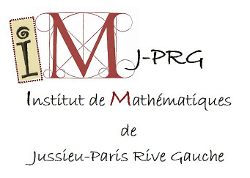

| Equipe(s) : | tga, |
| Responsables : | Najib Idrissi et Emmanuel Wagner |
| Email des responsables : | najib.idrissi-kaitouni@u-paris.fr, emmanuel.wagner@imj-prg.fr |
| Salle : | 1013 |
| Adresse : | Sophie Germain |
| Description | Un plan d’accès est disponible ici. Pour vous inscrire à la liste de diffusion du séminaire, veuillez vous rendre à cette adresse. |
| Orateur(s) | Paula Truöl - ETH Zürich, |
| Titre | [K-OS] The alternation number and the Upsilon-invariant at 1 of positive 3-braid knots |
| Date | 17/02/2022 |
| Horaire | 14:00 à 15:00 |

| |
| Diffusion | https://lrobert.perso.math.cnrs.fr/join-kos.html |
| Résume | The alternation number of a knot is the minimal number of crossing
changes needed to deform the knot into an alternating knot, i.e. a
knot with a diagram where the crossings alternate between over- and
under-crossings as one travels around the knot. The tau- and the
Upsilon-invariant from knot Floer homology give a lower bound on the
alternation number of any knot. We use this lower bound and an upper
bound by Abe and Kishimoto to determine the alternation numbers of all
positive 3-braid knots. The key tool and a result of independent interest is an explicit calculation of the Upsilon invariant at 1 of all 3-braid knots. We determine this integer-valued (concordance) invariant – which was defined by Ozsváth, Stipsicz and Szabó – by constructing cobordisms between 3-braid knots and (connected sums of) torus knots. In particular, we will only work with properties of Upsilon and not its definition, so no background in knot Floer homology will be assumed. |
| Salle | 1016 |
| Adresse | Sophie Germain |